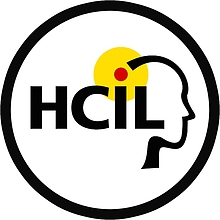HCIL Researchers Presenting Six Papers at IEEE VIS 2018

Researchers in the University of Maryland’s Human-Computer Interaction Lab (HCIL) are presenting six papers at a leading computer visualization conference in Berlin next month.
The HCIL team will discuss their work at the Institute of Electrical and Electronics Engineers Visualization (IEEE VIS) conference, held this year from October 21–26. IEEE VIS is considered the premier forum for advances in scientific and information visualization, bringing together an international community of researchers and practitioners from academia, government and industry to explore shared interests in tools, techniques and technology.
Topics covered by the HCIL group include novel applications used in data analytics. Five of the papers explore different ways to create and display visualizations of data, and a sixth proposes using scent to assist in conveying data.
“The reason we’ve been successful in having so many papers accepted this year is simply that my students are brilliant and all have their own strong ideas,” says Niklas Elmqvist, an associate professor in the College of Information Studies (iSchool) who is the director of HCIL. “I’m just amazed at their talent. It’s really a team effort.”
Elmqvist also has an appointment in the University of Maryland Institute for Advanced Computer Studies, which supports HCIL in tandem with the iSchool.
Elmqvist collaborated on five of the papers, working with iSchool graduate students and postdocs as well as researchers overseas.
The six papers are:
“Elastic Documents: Coupling Text and Tables through Contextual Visualizations for Enhanced Document Reading” resulted from an internship in Adobe’s Creative Intelligence Lab by Sriram Karthik Badam, a doctoral student in computer science. The paper introduces a new model for viewing data-rich documents as databases of multimedia content. It also proposes a specific technique for showing contextual visualizations linked to running text. In practice, the researchers say, the elastic document viewer parses the text to automatically show visualizations in the margins of the document that are relevant to the narrative.
“Vistrates: A Component Model for Ubiquitous Analytics” is also authored by Elmqvist and Badam, who collaborated with researchers from Aarhus University in Denmark. Vistrates is a new open source platform for building data science tools that can be distributed and shared across devices, such as your smartphone, tablet or even smartwatch. Elmqvist says it is a powerful software that allows even novice users to simply connect charts, calculations and databases into an interactive data visualization.
“Face to Face: Evaluating Visual Comparison” was written by Elmqvist and Brian Ondov, a second-year computer science doctoral student, with researchers from Northwestern University. The project involves a bioinformatics tool called Krona that uses radial sunburst charts, which are a combination of pie and organizational charts. One of the tool’s layouts compares data sets in half circles as if they are mirror images of each other, Elmqvist says. This led the group to ponder whether mirroring in itself was a useful way to facilitate comparison for other visualizations.
“Information Olfactation: Harnessing Scent to Convey Data” was authored by Elmqvist with HCIL doctoral student Andrea Batch and master’s student Biswaksen Patnaik. The paper is “easily our most crazy idea to date,” says Elmqvist. The HCIL team believes that their work may open up an entirely new topic of information olfactation, in which scent can assist visualizations to convey information in a structured way. Their paper proposes two prototype displays—a tabletop for a desktop computer and a wearable model for a virtual reality headset—and three applications to use them.
“ATOM: A Grammar for Unit Visualization” stemmed from recent doctoral graduate Deokgun Park’s internship at Microsoft Research, who is now an assistant professor of computer science at the University of Texas at Arlington. The paper proposes a new family of charts called unit visualizations where each data element is represented by a unique graphical shape, such as dots stacked together to form a bar chart. In addition to showcasing past and present examples, the team derived a new visual grammar called Atom that allows specification of these visualizations in a declarative manner.
“Visualizing Ranges over Time on Mobile Phones: A Task-Based Crowdsourced Evaluation” was written by Eun Kyoung Choe, an assistant professor in the iSchool working in HCIL. She collaborated on the paper with a research scientist from France’s national computer science research institute, and two data visualization researchers at Microsoft Research. One of the Microsoft researchers, Bongshin Lee, earned her master’s and doctoral degrees in computer science at UMD. In the paper, the researchers evaluate two types of visualizations—linear and radial– to display ranges over time on small screens. Their research is the first crowdsourced visualization experiment conducted exclusively on mobile phones. The researchers conclude that users are quicker to complete tasks with a linear layout opposed to a radial one, yet still make about the same number of errors.
Research descriptions of five of the papers are adapted from Niklas Elmqvist’s blog, where Elmqvist plans to highlight each paper individually leading up to the conference.
—Story by Maria Herd
